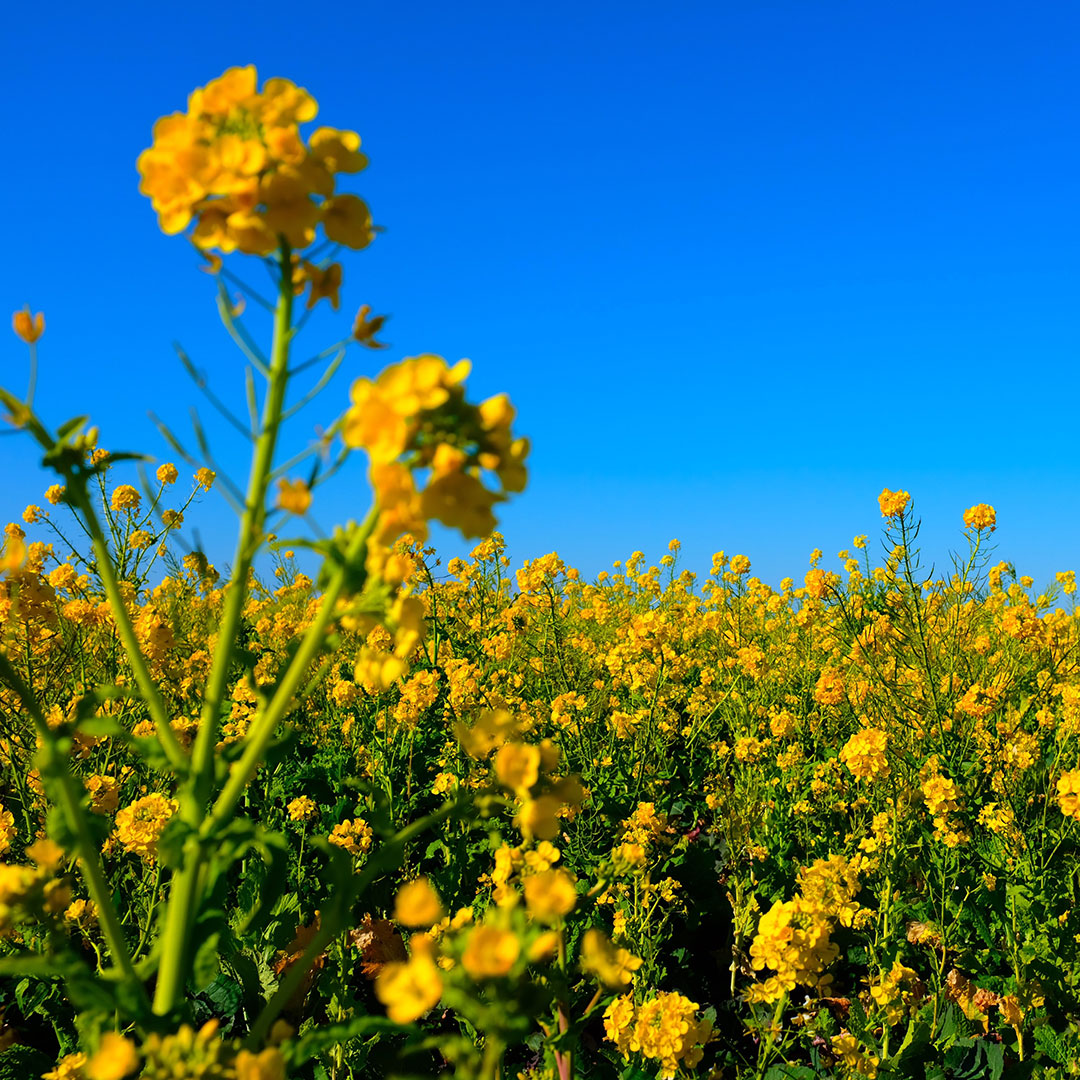0.38 kg CO2eq per kg canola
2.0 Mt CO2eq

Alberta Canola – A Global Success Story:
|
Country |
GHG emissions per kg Canola (kg CO2eq/kg) (See Note 6) |
Reference |
|
Canada |
0.38 |
|
|
Australia |
0.50 |
|
|
Iran |
0.30 – 0.71 |
|
|
China – Case 1 |
0.64 |
|
|
China – Case 2 |
1.02 |
[1] Canadian Roundtable for Sustainable Crops. 2017. "CRSC Major Crop Carbon Lifecycle Assessment, 2017." http://metrics.sustainablecrops.ca/home/criterion/2
[2] Eady, Sandra. 2017. “Greenhouse gas emissions from the cultivion of canola oilseed in Australia.” Commonwealth Scientific and Industrial Research Organisation, Australia. https://publications.csiro.au/publications/publication/PIcsiro:EP179698
[3] Soltani, Afshin and Ebrahim Zeinali. 2014. “Optimal crop management can reduce energy use and greenhouse gases emissions in rainfed canola production.” International Journal of Plant Production 8(4). October 2014. 1735-8043. https://doi.org/10.1016/j.energy.2016.10.010
[4] Uusitalo, V., S. Vaisanen, J. Havukainen, M. Havukainen, R. Soukka, M. Luoranen. 2014. “Carbon footprint of renewable diesel from palm oil, jatropha oil and rapeseed oil.” Renewable Energy. 69 (2014) 103-113. https://www.sciencedirect.com/science/article/pii/S0960148114001657?via%3Dihub
[5] Ji, Changxing, Yijie Zhai, Tianzuo Zhang, Xiaoxu Shen, Yueyang Bai, and Jinglan Hong. 2021. “Carbon, energy and water footprints analysis of rapeseed oil production: A case study in China.” Journal of Environmental Management. 287 (2021) 112359. https://www.sciencedirect.com/science/article/pii/S0301479721004217
Notes
You might see the “carbon footprint” of a kilogram of beef based on one of three different foundations: first, the “live weight” of the cattle, representing the highest weight of that animal as it goes to be processed. Next, the emissions may be expressed per kilogram of the “carcass weight” of the cattle, which represents the animal’s weight after removal of the head, hide, GI tract and internal organs. The smallest weight considered would be “retail beef”. This represents the packaged meat that goes to the market In Canada. These numbers are tracked meticulously through the livestock industry, and the government has some industry averages as follows:
- Carcass weight to live weight ratio = 0.56
- Retail weight to carcass weight ratio = 0.73
- Retail weight to live weight ratio = 0.41
What this means is if we express our GHG emissions per kilogram of retail weight, it is 29 kg CO2eq per kg. However, if we express that per kilogram of live weight, it is 12 kg CO2eq per kg. We need to know the basis of the emissions calculation1.
[1] Government of Canada. “Red meat conversion factors.” Accessed Sept. 23, 2021. https://agriculture.canada.ca/en/canadas-agriculture-sectors/animal-industry/red-meat-and-livestock-market-information/slaughter-and-carcass-weights/conversion-factorsThese figures were estimated here as a product of the province’s 2019 tonnes of production[1] and the estimated emissions per kg noted above. That factor includes estimated changes in soil carbon, emissions from energy use, fertilizer manufacturing, nitrous oxide (N2O) emissions and seeds and pesticides indirect emissions. These factors were estimated for the three Regional Units found in Alberta, resulting in an emissions estimate specific to this province.
[1] Statistics Canada. Table 32-10-0359-01 Estimated areas, yield, production, average farm price and total farm value of principal field crops, in metric and imperial units. https://www150.statcan.gc.ca/t1/tbl1/en/tv.action?pid=3210035901

